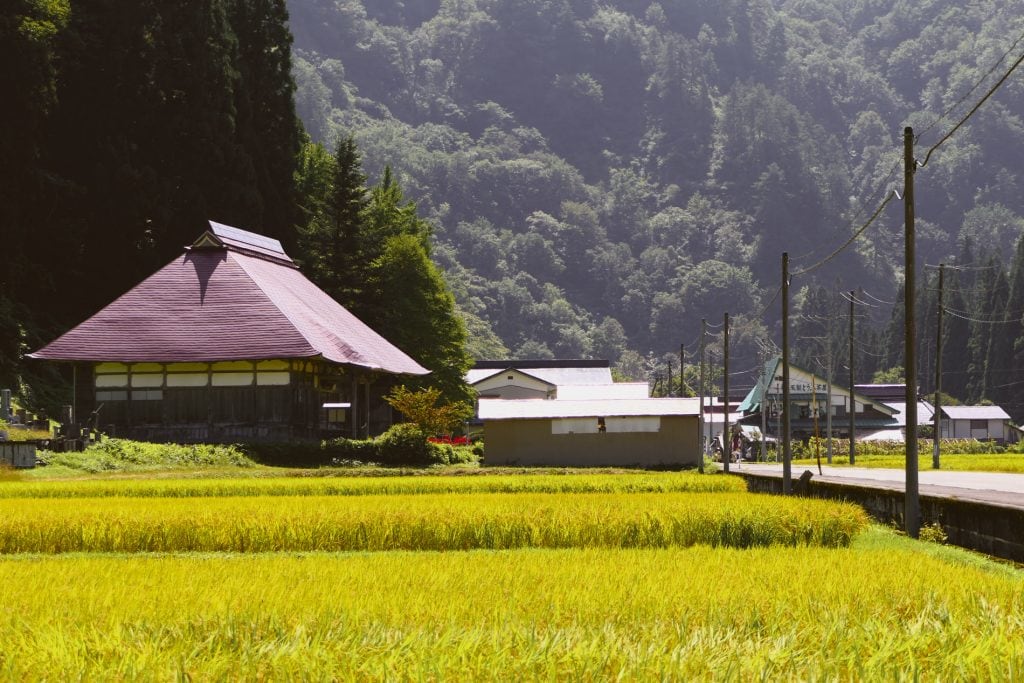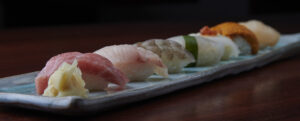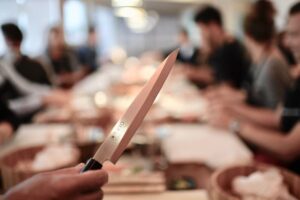What does "terroir" mean in relation to Japanese sake?
In the wine world, people often talk about "terroir". Terroir is a word derived from the Latin word "terra", meaning earth or land. It is a term of French origin and has a variety of possible interpretations.
But mainly it refers to the natural factors of the particular area where the grapes are grown, such as climate, soil characteristics and topography. Terroir is considered the most influential flavor factor of wine.
In the case of sake, it behaves in such a way that the Raw material rice, can be easily transported. For this reason, sake is generally said to be less influenced by terroir than wine. But recently, many prefectures are trying to redefine the regional style. Brewers are striving to create sake that expresses terroir by using locally grown sake rice, in-house yeast and Local water use
In addition, the Tōji and its craftsmanship is another crucial element for the characteristics of each sake. Each region of Japan has its own guild of Tōji (brewmasters) who have inherited the traditional techniques of the region. The taste of the sake therefore also changes depending on which guild the Tōji comes from.
To explain the characteristics of sake from different regions in Japan, we will divide Japan into nine sections.
Usually, Japan is divided into only eight regions: Hokkaidō, Tōhoku, Kantō, Chūbu, Kinki, Chūgoku, Shikoku, Kyūshū-Okinawa.
However, since the Chūbu region, which is located in the center of Japan, itself already includes nine of Japan's 47 prefectures, we divide this region into the two Tōkai regions and the Hokuriku-Kōshinetsu region in order to differentiate sufficiently.
Sake from Hokkaidō - clear, like the winter air in the north
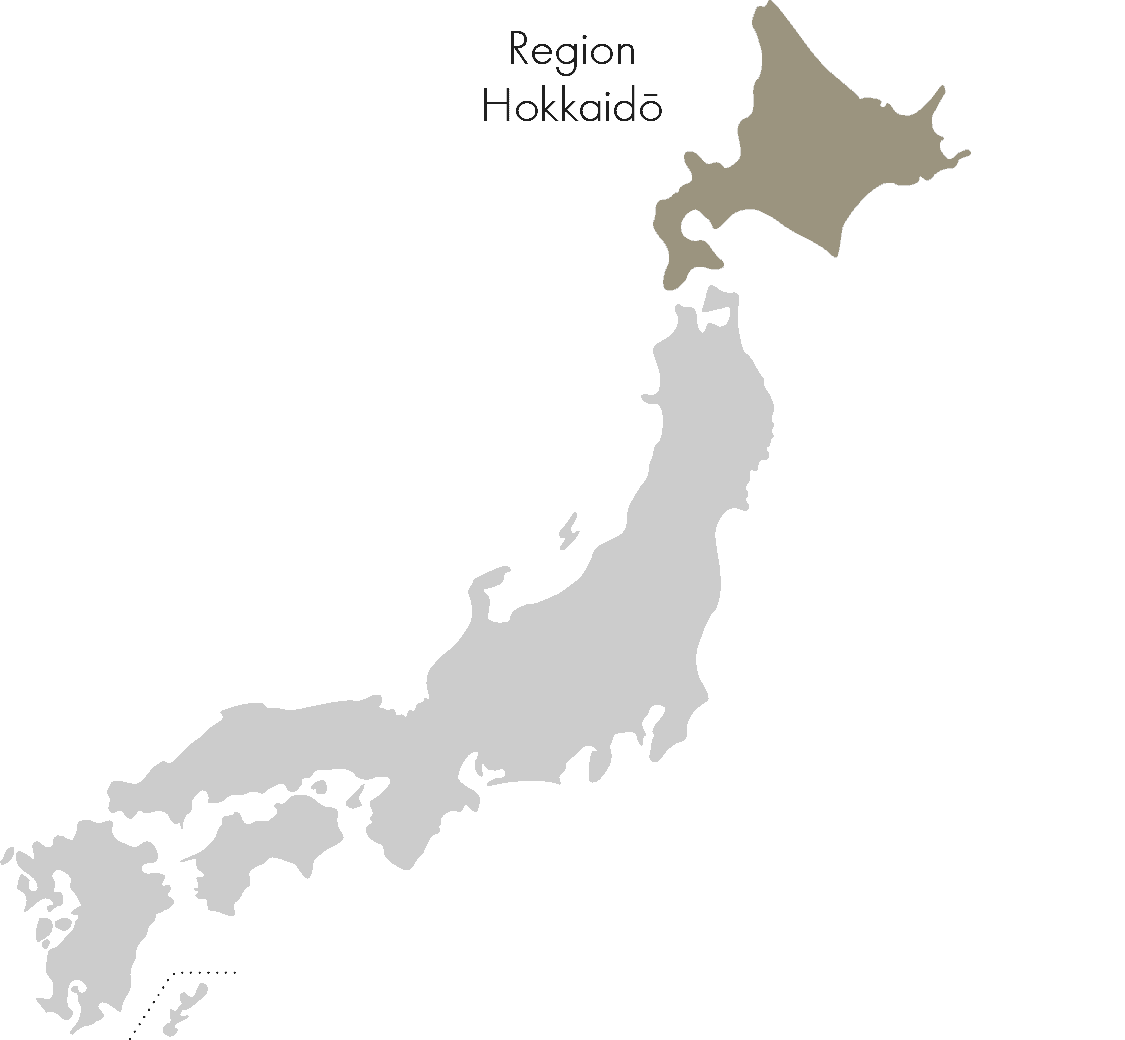
Located at the northernmost tip of Japan's main island of Honshū, Hokkaidō has extensive land surrounded by the sea, where both fishing and agriculture flourish. The history of sake brewing is relatively short, beginning in about the Meiji era. The reason for this "late" spread of sake in northern Japan is that Hokkaidō was formerly inhabited by aboriginal "Ainu" was populated and the culture of the mainland had not yet spread. Incidentally, the Ainu themselves used to have an alcoholic beverage brewed from millet called "Tonoto".
If one were to describe the characteristics of Hokkaidōs sake in one word, the word "clarity" would be appropriate. During the autumn and winter months when the sake is made, Hokkaidō experiences severe cold. The cold air and melting snow contribute to a light, dry sake with a clean, refreshing taste. This region boasts one of the highest rice harvests in Japan, due to large-scale rice cultivation that takes advantage of the vast land and abundant water sources. Hokkaidō rice is known for its reliable product quality. To get the most out of this rice, Hokkaidōs sake is characterized by a high proportion of Junmaishu off.
Recently, new varieties of sake rice such as "Ginpū" and "Kitashizuku" have been developed.
Sake from the Tōhoku region, the cool climate of the north
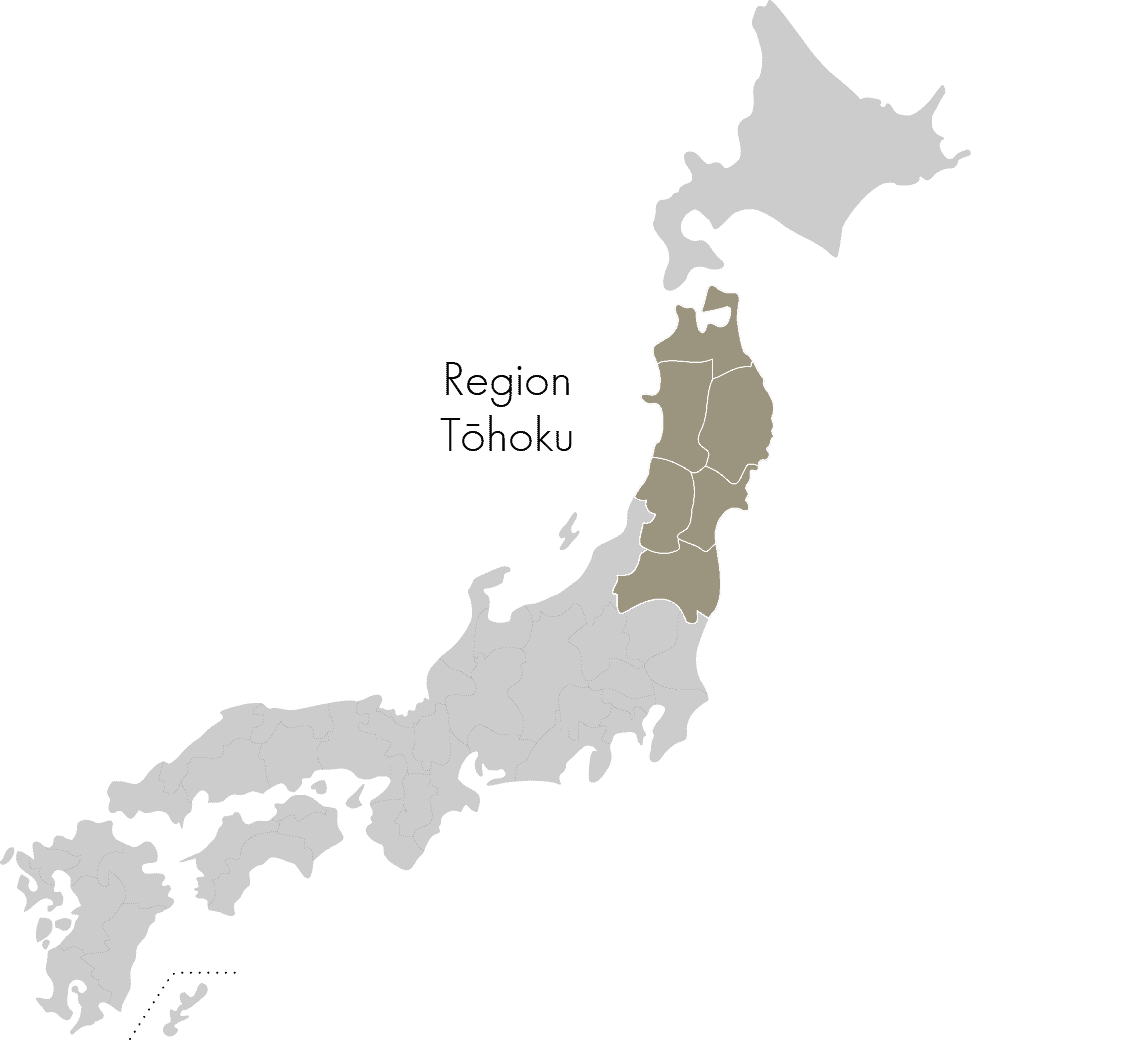
The Tōhoku region is located in northeastern Honshū, Japan.
It includes the prefectures of Aomori, Akita, Iwate, Yamagata, Miyagi and Fukushima. The Tohoku region is not as much in focus with tourists as the Kantō or Kinki regions, but is often dearly loved by Japanese connoisseurs.
Due to the low temperatures and heavy snowfalls, the region was famous for sake brewing long before the modern technical equipment that nowadays allows us to closely observe and control the temperature curve during sake production.
At Sake Brewing applies: the higher the temperature, the faster the fermentation of the mash. Fermentation at low temperatures over a long period of time produces a fine, light flavor. For this reason, many light, dry sake are produced in the Tōhoku region. Iwate Prefecture is home to one of Japan's three major Tōji guilds, Nanbu Tōji Guild, which has been passing down its brewing techniques since the Edo period.
This region is also a famous rice-growing area, and much effort has been put into the development of Sake rice invested. Each prefecture has developed its own original sake rice, such as "Akita-Sakekomachi", "Kura no Hana" and "Ginfubuki". The very high quality of sake from the Tōhoku region can also be seen from the fact that they have won the most gold medals in national sake competitions.
Well-known sake from this region are for example Suirakuten Daiginjō, Nanbubijin Ginjō, well-known breweries also Katsuyama or Daishichi.
From these regions you can find in our Restaurant sansaro in Munich currently try the following sake with us:
Suirakuten Daiginjō
Koshiki Junzukuri Junmai
Nanbubijin Ginjō
Katsuyama Diamond
Katsuyama Den
Katsuyama Lei
Katsuyama En
Kura no Hana
Sawayaka Junmai
Nagurayama Yokikana
Daishichi Kimoto
Daishichi Futo-Ō
Sake from the trend-setting Kantō region
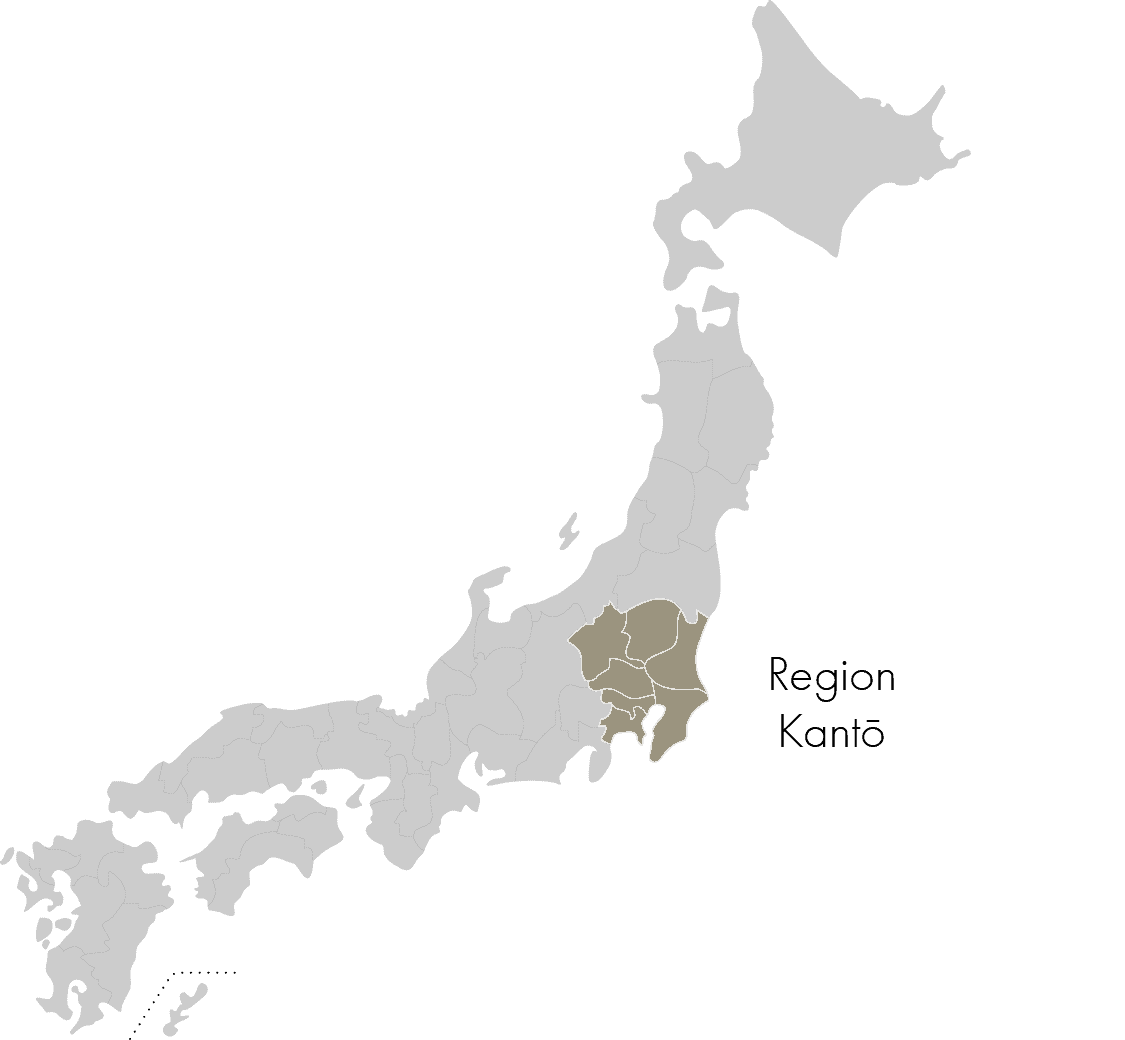
The Kantō region is located in the eastern part of Honshū, including the capital Tōkyō. In addition to Tōkyō, it also includes the prefectures of Gunma, Tochigi, Ibaraki, Chiba, Kanagwa and Saitama.
This region is a metropolitan area with a concentrated population, but also has surprisingly natural region with many mountains and rivers. Sake is brewed there, for example, with spring water from mountains such as Fuji-san and Tsukuba-san, and with spring water from the Kinugawa, Tonegawa and Tamagawa rivers.
During the Edo period (1603-1868), major roads were extended from the central city of Edo (now Tōkyō) to the provinces so that rice suitable for sake brewing could be obtained from various regions. The climate in the Kantō region is not very conducive to brewing, so there are not as many breweries there, but some breweries still produce exceptionally high-quality sake.
Tōkyō is also, of course, the central capital and region where everything from Japan comes together, so not only can sake from all regions of Japan be obtained in Tōkyō, but sake from all regions can also make a name for themselves there and enter the wider public's national consciousness as if with a springboard.
Sake from the Hokuriku-Kōshinetsu region - home to many famous breweries.
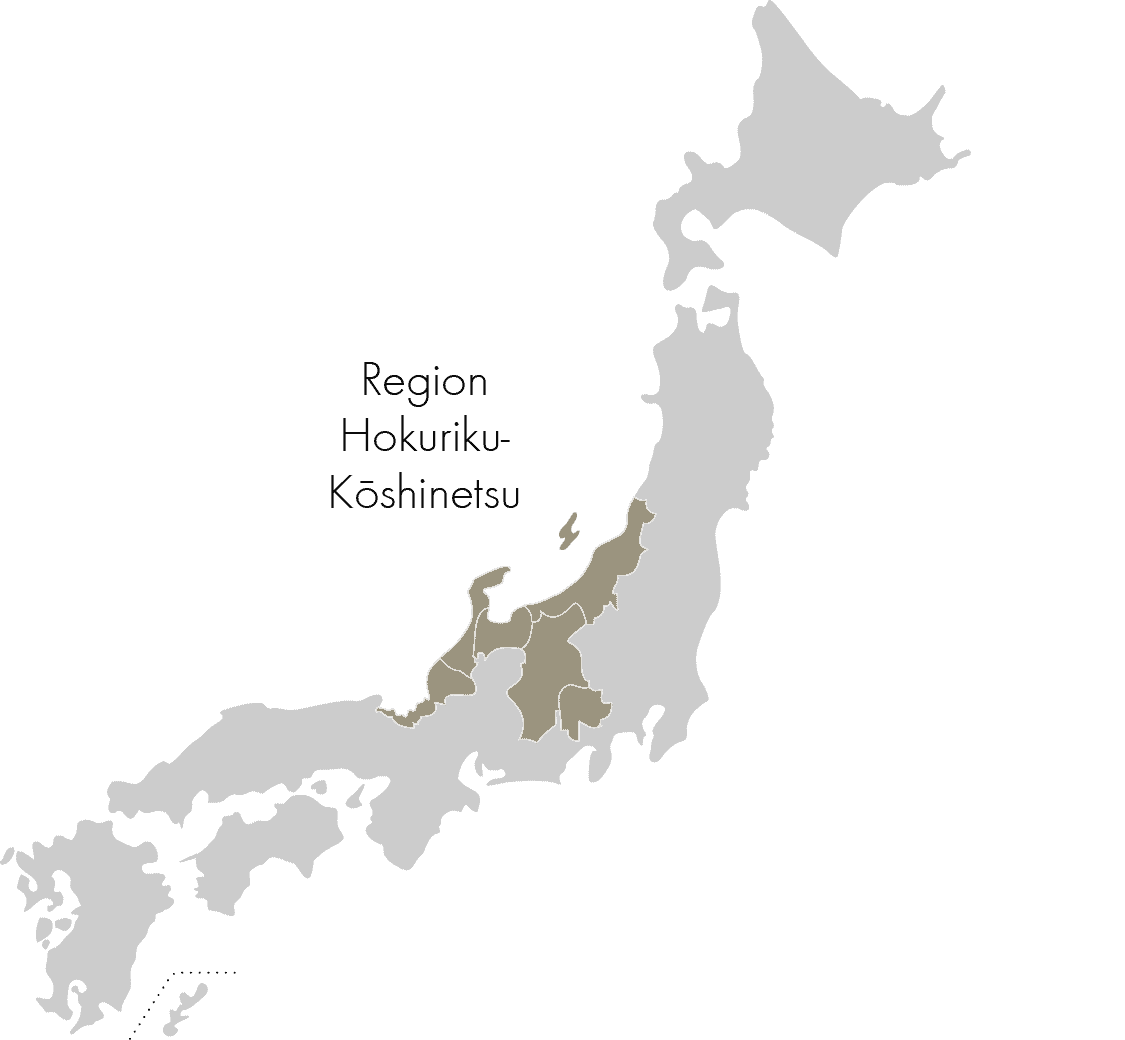
This region is known as the land of snow and the rich blessings of the Sea of Japan. It includes Niigata, Toyama, Ishikawa, Fukui, Yamanashi and Nagano prefectures.
In winter, the dry, cold air masses that originate near Siberia collide with the high mountain ranges, resulting in heavy snowfall in winter and a large amount of meltwater in spring that moistens the land. As a result, rice cultivation flourishes in this region. In addition to the cold climate, the region's humid environment is ideal for sake brewing.
World famous among connoisseurs: dry sake from Niigata
After World War II, the Japanese sake market was dominated by sweet sake. Then in the 1960s, sake from Niigata began to create a new trend with its high-quality, light and dry taste, initially triggering a local sake boom. Today, among sake connoisseurs and lovers, the "typical dry Niigata style" of sake is highly sought after and appreciated. "Gohyakumangoku", a sake rice developed in Niigata Prefecture, is a key to achieving this light and dry taste. This is one of the most produced sake rice varieties in Japan, after Yamadanishiki.
Niigata and the rest of the Sea of Japan coast are a famous brewing region that produces a large number of high-quality sake varieties such as Ginjōshu and Junmaishu. The sake favored there is a light, dry style that pairs well with the abundant seafood. Ishikawa and Nagano prefectures favor a rich, sweet taste, while Toyama prefers a rich, dry taste.
In our restaurant sansaro we currently have the following sakes from the region on the drinks menu:
Koshi no Kanbai Sai
Koshi no Kanbai Muku
Koshi no Kanbai Kinmuku
Imayo Tsukasa Junmai Daiginjō
Imayo Tsukasa Black
Tengumai Yamahai Junmai
Shinsen Umakuchi
Sake from the Tōkai region - premium quality with carefully selected rice.
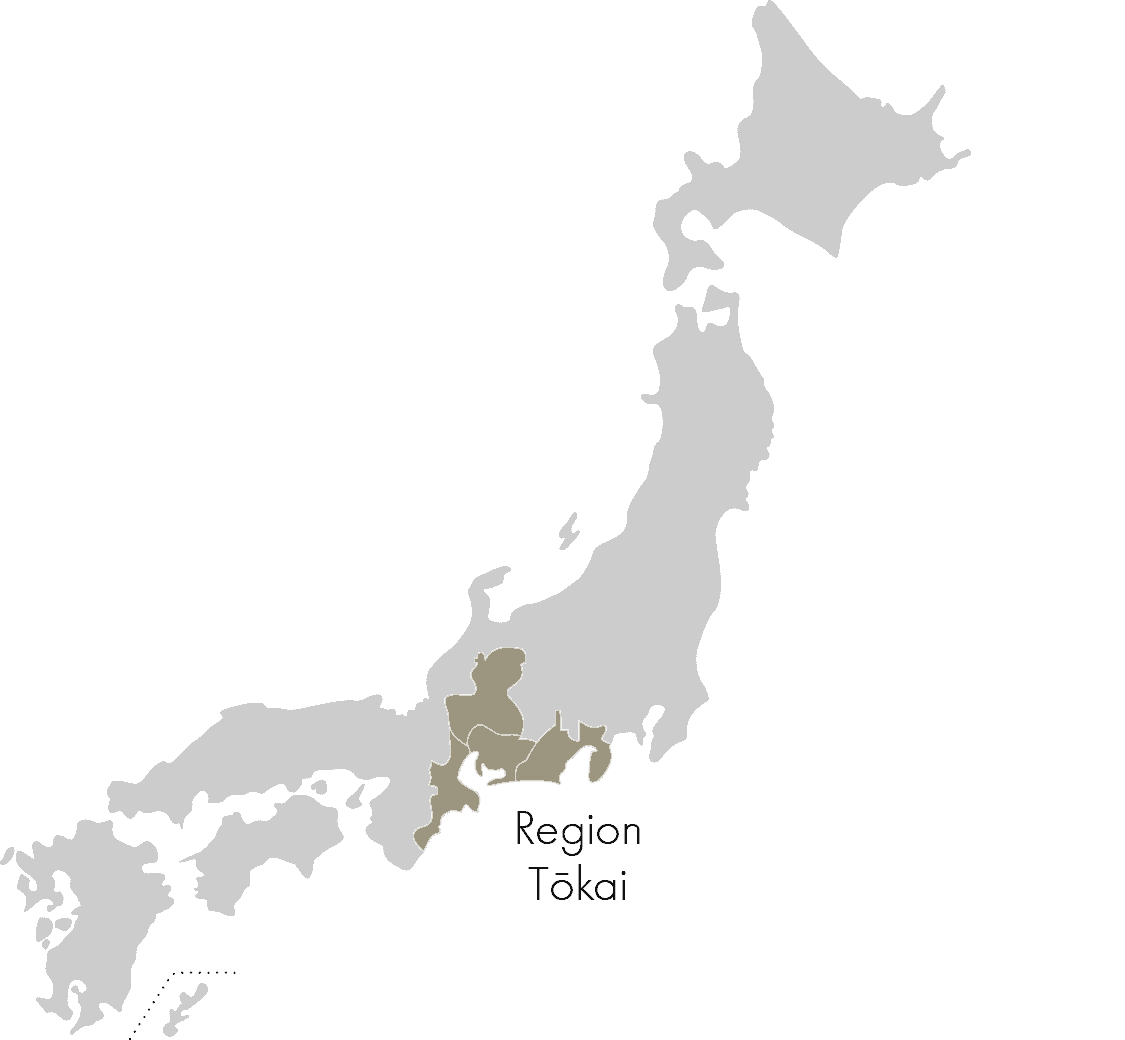
The Tōkai region, comprising the prefectures of Aichi, Gifu, Mie and Shizuoka, is located in the center of the southern side of Japan's main island of Honshū.
The climate is mild with relatively high rainfall. Parts of Gifu and Mie prefectures are also areas of heavy snowfall, and the region is blessed with abundant water resources, including springs in the Northern Alps, the Kiso-Ontake and Hakusan mountain ranges, and the Kisogawa and Nagaragawa rivers fed by melting snow. In addition, the region has one of the largest plains in Japan, the Nōbi Plain, and rice cultivation thrives on the fertile soil formed by sediments from rivers.
For this reason, many breweries in this area are very particular about their sake rice, which can be said to be a distinctive feature of sake breweries in the Tōkai region. In addition to searching for high-quality rice, many of the breweries began contract growing or growing their own rice suitable for sake brewing early on, and many of them have been successful in doing so.
Some of the best rice varieties for sake brewing come from the Tōkai region, such as "Yume Ginka" from Aichi, "Hidahomare" from Gifu and "Homarefuji" from Shizuoka.
The Tōji who brew sake in the Tōkai region are diverse, coming from the Tōji guilds of Nanbu, Noto, and Tajima. The taste of sake in Aichi and Mie tends to be full-bodied and sweet, while that of Gifu and Shizuoka tends to be light and dry.
Sake from this region available at Sansaro
Kuheiji Eau du désir
Kuheiji Ka no chi
Kuheiji Betsu Atsurae
Sake from the Kinki region - home of the two most famous sake places.
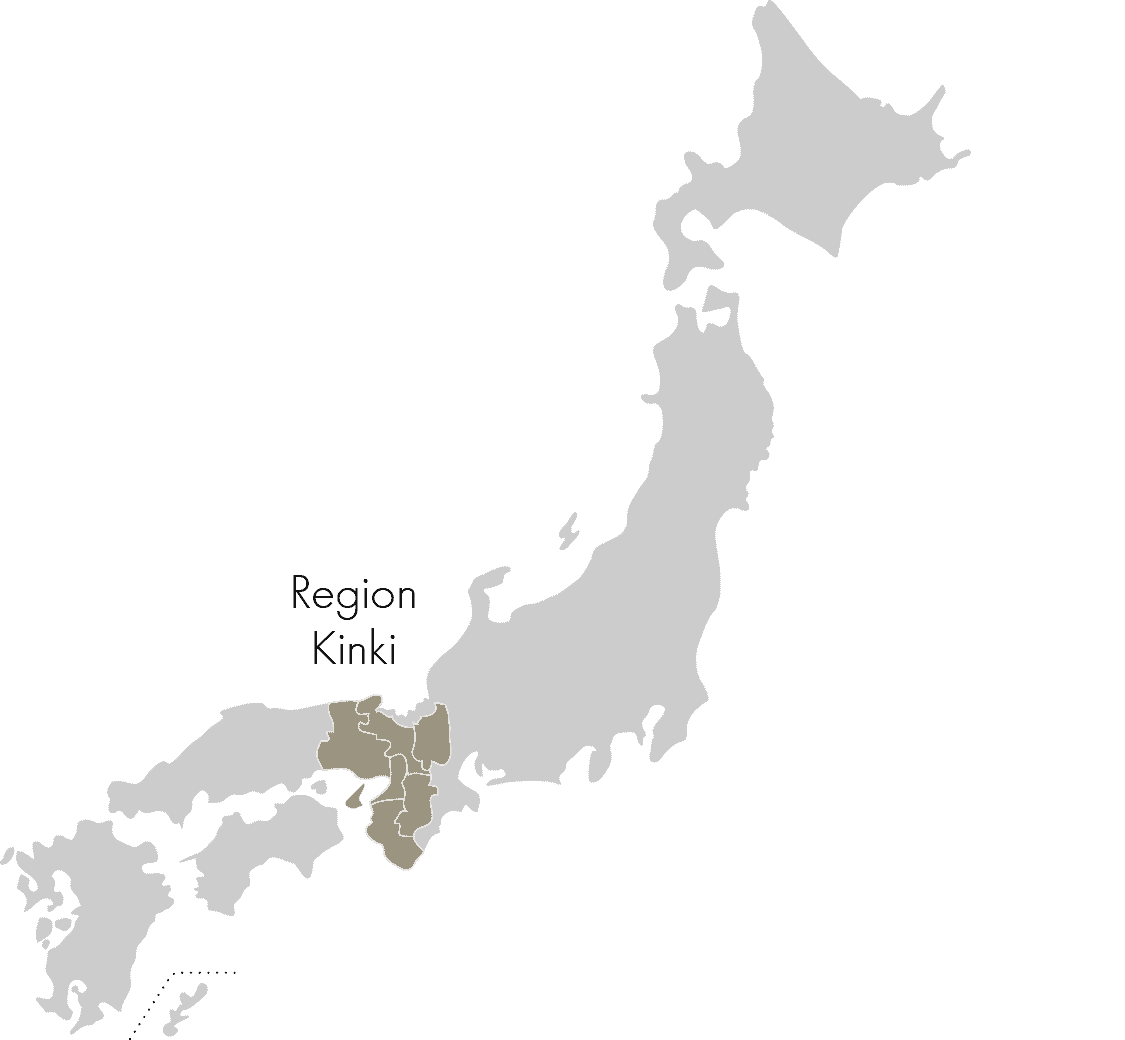
The Kinki region is located in the western part of Honshūs, and forms the cultural, demographic, economic center of western Japan. It includes the prefectures of Shiga, Kyōto, Hyōgo, Ōsaka, Nara and Wakayama.
Two of the most famous sake places in Japan are located in this region. The first is Nada County in Hyōgo Prefecture, home of Yamadanishiki, the king of sake rice. The sake produced there is called "otoko-sake" (male sake) because of its rich, dry, strong flavor.
Behind the fame of Nada's sake since the Edo period is the success of the Tanba Tōji guild.
The Tanba Tōji Guild is one of the three major Tōji guilds and has played a central role in sake brewing. It moved throughout the country to teach brewing techniques and had a great influence on sake brewing in their respective regions.
Another famous sake place is Fushimi in Kyōto.
Fushimi is known for its particularly soft water, and the sake from there is called "Onna-sake" (so to speak "female sake") because of its mild and pleasant taste.
Hyōgo and Kyōto remain the leading sake producers today, with the two prefectures accounting for about half of all sake produced in Japan.
Throughout the Kinki region, full-bodied, sweet sake is the mainstream, especially in Kyōto, but sake from Ōsaka is light and dry and can be enjoyed with richly flavored dishes.
Read more about the importance of water as a raw material here.
Sake from this region available at Sansaro
Azolla 50
Fukuju Kōbe Classic
Chōryō Tarusake
Sake from the Chūgoku region, which combines innovation and tradition.
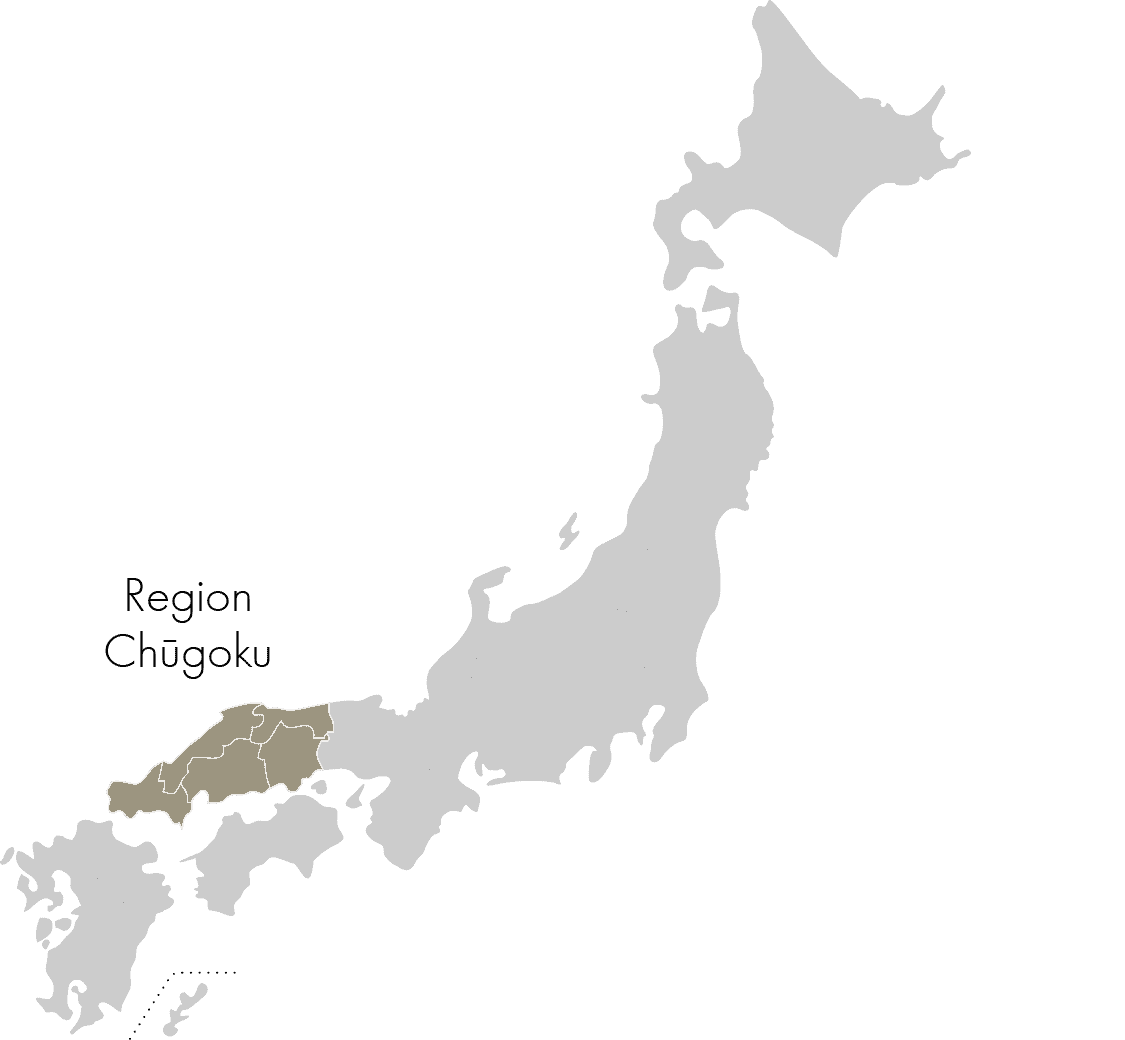
The Chūgoku region is located at the western end of Honshū Island and extends east and west. It includes the prefectures of Tottori, Shimane, Hiroshima, Okayama and Yamaguchi.
It is characterized by land with calcareous strata and hilly topography. Of particular note in this region is Saijō, a historical sake place in Hiroshima Prefecture. Saijō's history as a sake place does not go back as far as that of Nada in Hyōgo, but the area has nevertheless earned a very good reputation. Saijō is often considered one of Japan's most important places for sake. Unlike Nada, its Water but softer and gentler and was therefore considered unsuitable for sake production in the past.
In 1898, however, sake brewer Senzaburō Miura developed a brewing technique for making sake with soft water, laying the foundation for Hiroshima sake. The result is a sake-making technique now called "Ginjōshu." The lack of minerals in the water means that the yeast needs special conditions to thrive, and these conditions result in naturally flavored sake that are so popular today.
In addition to Hiroshima, many high quality sake are produced, such as Shimane Prefecture, known as the place where gods brewed sake in mythology, and Yamaguchi Prefecture, which produces world-renowned sake under the brand name "Dassai".
Sake from the Shikoku region - fine sake made from clear water
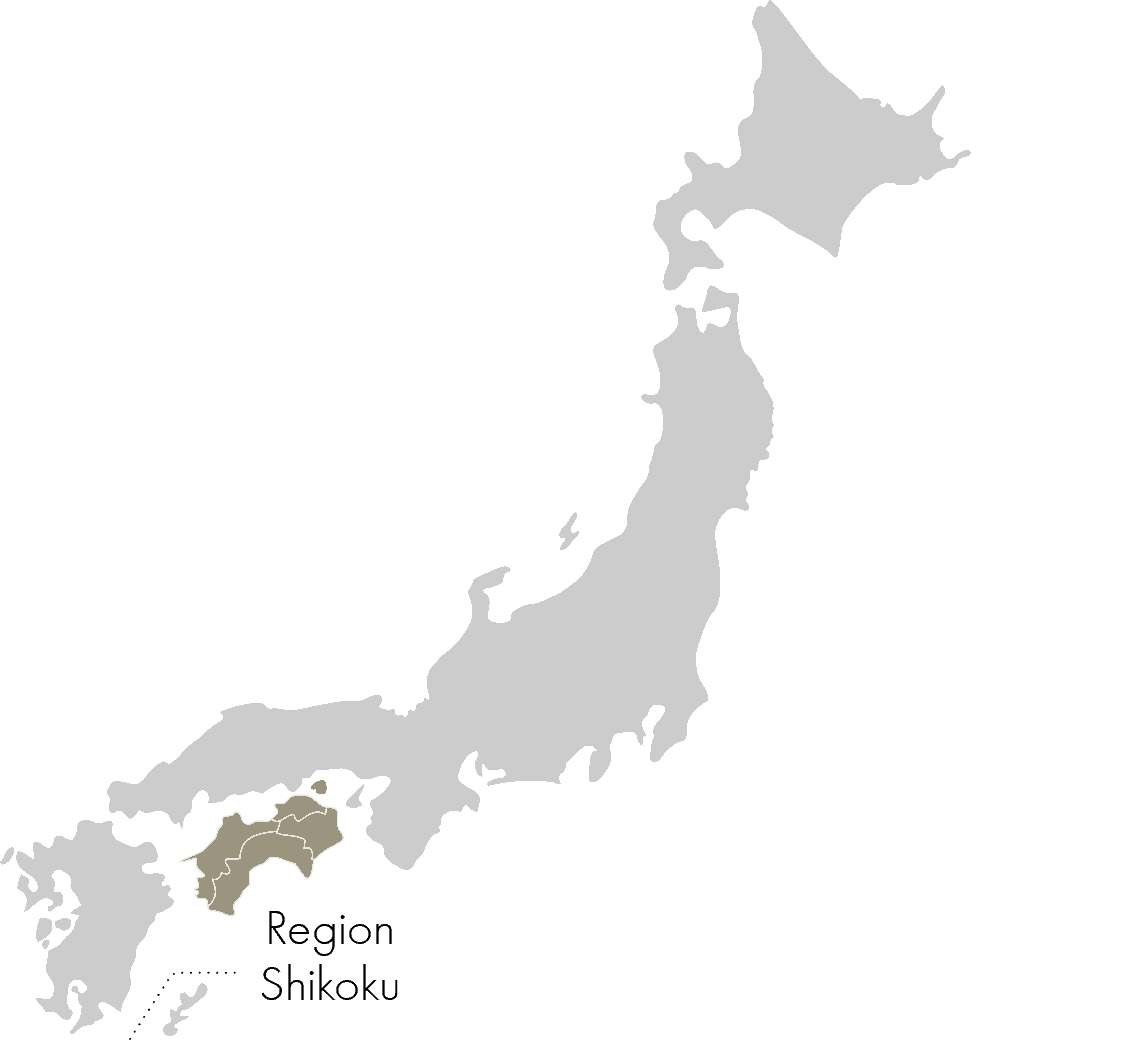
The Shikoku region is an island located in the southwestern part of mainland Japan. It includes the prefectures of Tokushima, Kagawa, Ehime and Kōchi.
The entire region seems to be a collection of huge, steep mountains. The Niyodo, Shimanto and Yoshino rivers, which flow from the mountains, are known for their clear water, and sake is brewed from their underground waters. Because of the mild climate, many breweries in the past have had difficulty controlling the temperature during brewing.
While dry sake is preferred in Kōchi, where the people have long enjoyed drinking sake, in Kagawa, Tokushima and Ehime on the Seto Inland Sea Site often drunk gentle sake with a sweet taste, which goes well with light dishes such as white fish.
Sake from this region available at Sansaro
Suigei Ginrei Junmai Ginjō
Sake from the Kyūshū region and from Okinawa, the land of the Shōchū culture.
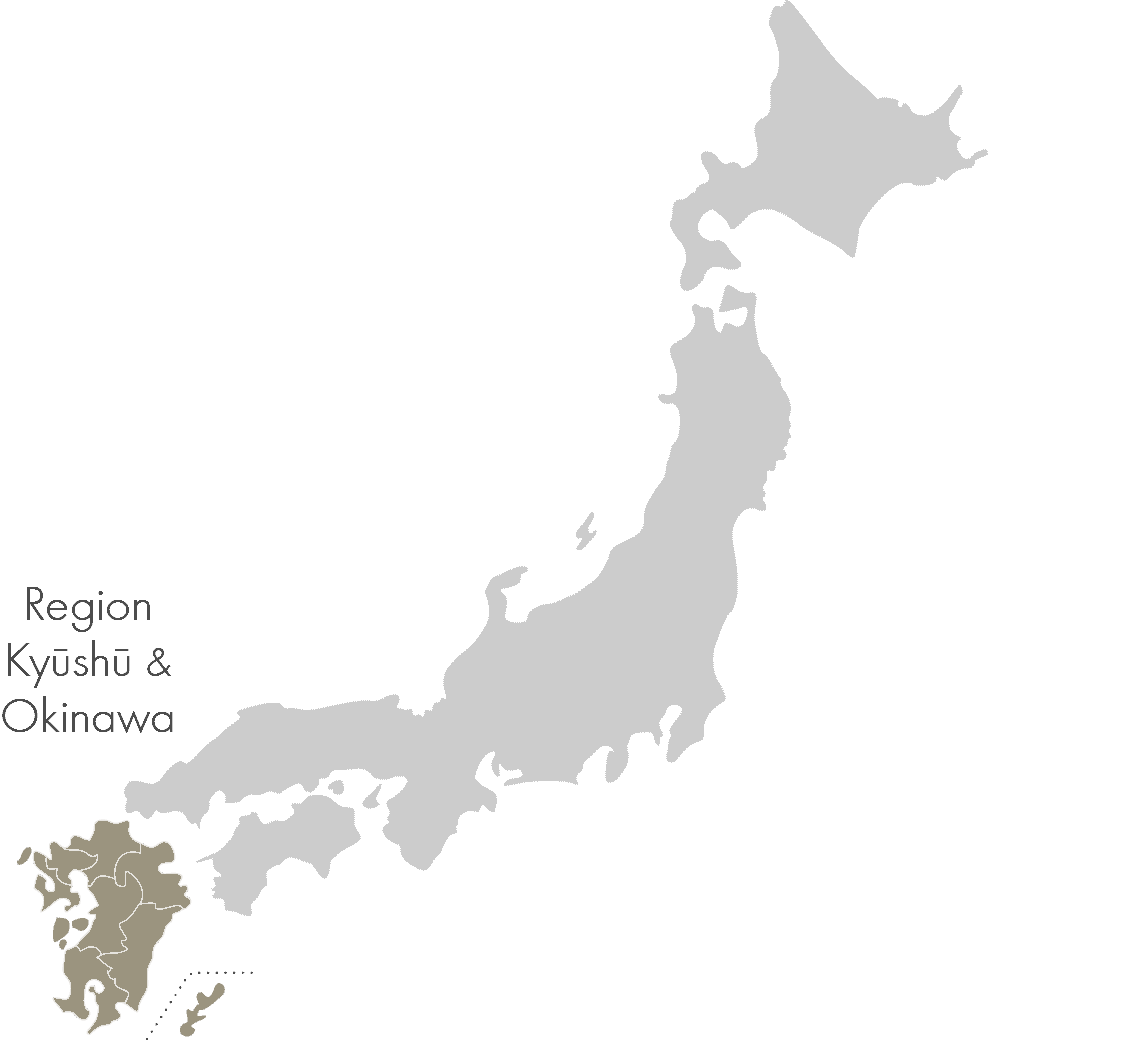
The Kyūshū and Okinawa regions are located in the southernmost part of Japan. These regions are known for their mild climate and is especially in the south more for Shōchū and the stronger Awamorithan famous for sake. They include the prefectures of Fukuoka, Ōita, Saga, Nagasaki, Kumamoto, Miyazaki, Kagoshima, as well as the prefecture of Okinawa.
However, the northern part of Kyūshū has cooler winters, which is a good climate for sake brewing. Above all, Fukuoka Prefecture is one of the leading producers of sake rice Yamadanishiki, and with the rich water sources, high quality sake is brewed.
Fukuoka and Okinawa are known for their light, dry sake, while other prefectures such as Saga and Nagasaki are known for their sweet sake.
In Kyūshū, there are quite a few breweries that produce both Shōchū (and more recently gin) and sake. As a result, there are some unusual sakes that cannot be found anywhere else, such as sake made with black Kōji gebraut werden, der ursprünglich für Shōchū verwendet wird. Darüber hinaus ist die Brauerei Amabuki aus Saga aktiv daran beteiligt, Sake unter Verwendung von Blütenhefe zu brauen, die durch die neueste Forschung geschaffen wurde.
Sake from this region available at Sansaro
Amabuki rhododendron
Amabuki Junmai Daiginjō
Amabuki Strawberry Blossom
We are enthusiastic about the japanese cuisine and culture. Visit us in our Restaurant sansaro in Munich or follow us on social media.
